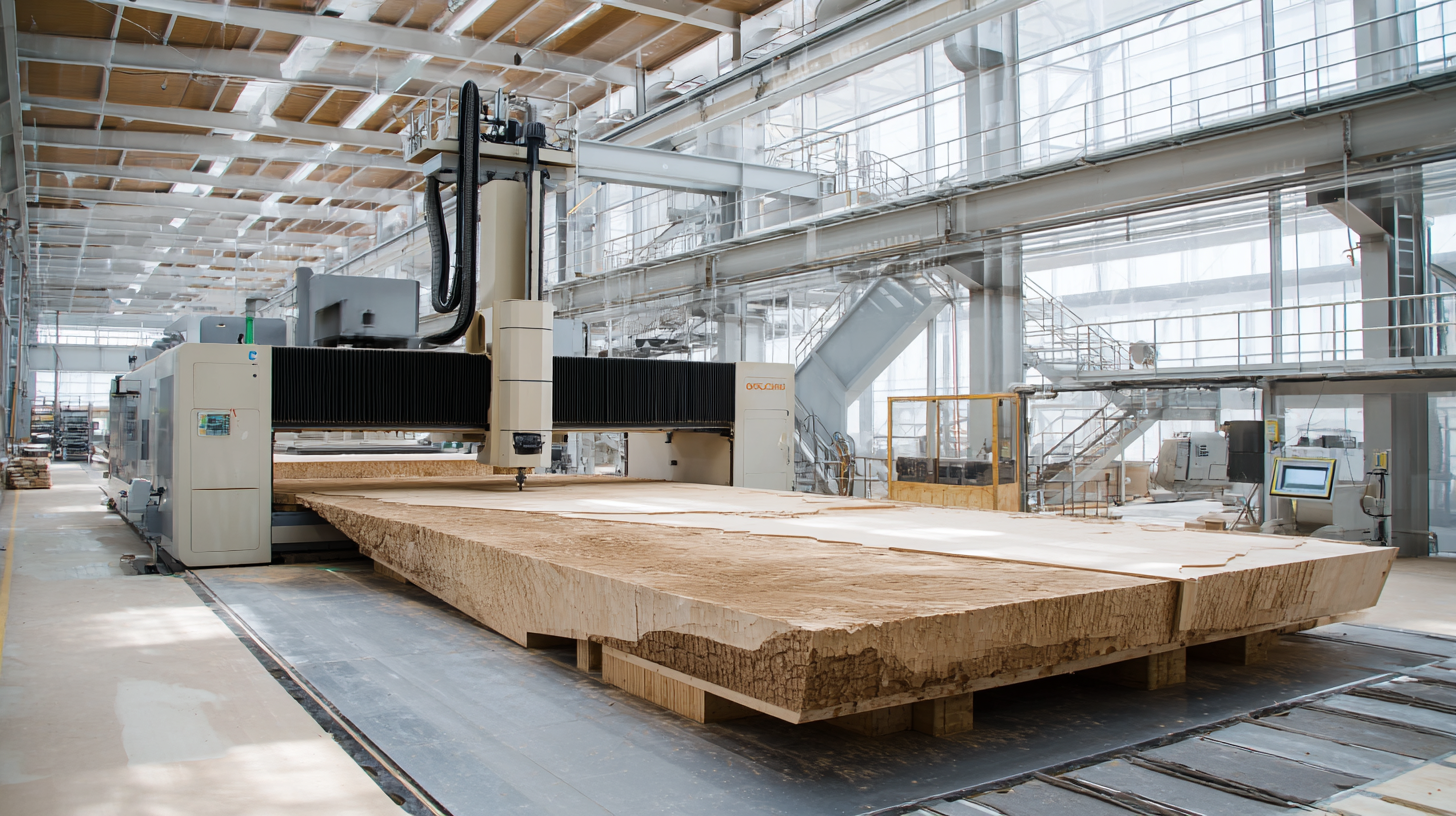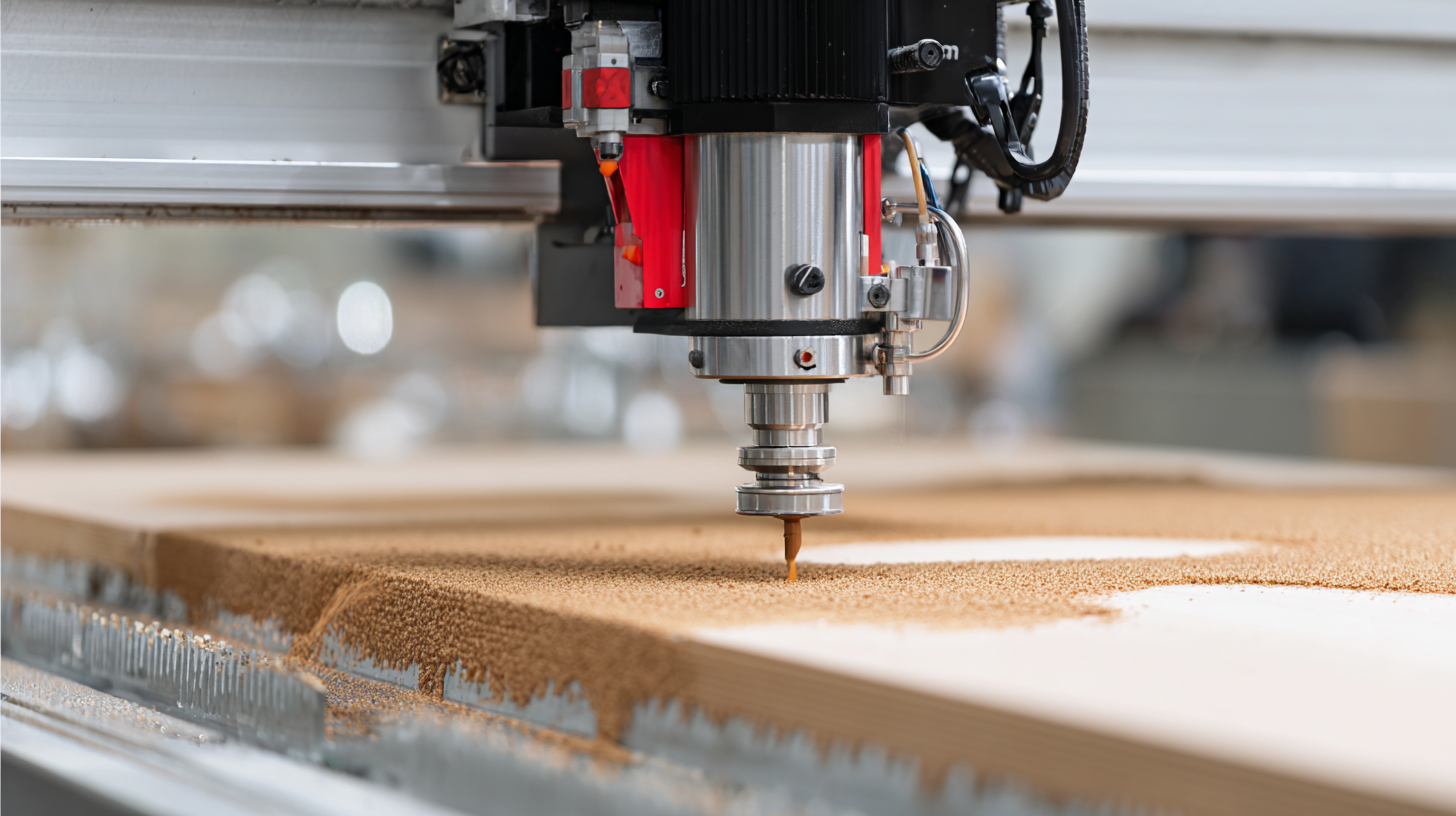China's Premier CNC Wood Cutting Machines Setting Global Standards in Quality and Innovation
In recent years, the global woodworking industry has witnessed a significant transformation, largely driven by advancements in technology and increased demand for precision manufacturing. Among the leading innovations, the CNC wood cutting machine has emerged as a game-changer, setting benchmarks in quality and efficiency. According to a report by Research and Markets, the global CNC machine market is projected to reach $117.3 billion by 2025, with a substantial share attributed to wood cutting applications. This surge stems from the need for manufacturers to produce intricate designs with unparalleled accuracy and reduced waste, factors that are critical in today’s competitive landscape.

Chinese manufacturers, in particular, have taken the lead in this sector, leveraging cutting-edge technology and robust production processes to offer machines that not only meet but often exceed international standards. As we delve into the world of CNC wood cutting machines, we will explore how they are revolutionizing woodworking and setting new paradigms for quality and innovation.
Applications of CNC Wood Cutting Machines in Furniture Manufacturing
CNC wood cutting machines have revolutionized the furniture manufacturing industry by enhancing precision and efficiency. These advanced tools utilize computer technology to achieve cutting and shaping tasks that were once labor-intensive and time-consuming. According to a market report by Grand View Research, the global CNC machine market is expected to reach $147.4 billion by 2026, driven largely by innovations in CNC technology and increasing demand from the furniture sector. This growth highlights the crucial role that CNC wood cutting machines play in producing high-quality, custom furniture pieces with minimal waste.
Tips for maximizing the benefits of CNC wood cutting machines include regular maintenance checks to ensure optimal performance, utilizing high-quality materials to enhance product durability, and investing in skilled personnel who can operate the technology effectively. Additionally, incorporating advanced software solutions for design and production can streamline processes and reduce lead times significantly.
Furthermore, the applications of CNC wood cutting machines extend beyond standard furniture. They can produce intricate designs, enhance production flexibility, and enable manufacturers to quickly adapt to market trends. Industry experts estimate that businesses employing CNC technology can achieve productivity gains of up to 50%, making it a game-changer for any furniture manufacturer looking to stay competitive.

Innovative Features of China's Premier CNC Wood Cutting Technologies
China's Premier CNC wood cutting machines have gained international acclaim due to their innovative features that set new benchmarks in the industry. One of the standout attributes is their advanced automation capabilities, which minimize human intervention and allow for precise, consistent cuts. This automation not only enhances efficiency but also significantly reduces production times, making these machines ideal for large-scale operations.
Additionally, these CNC wood cutting technologies are equipped with state-of-the-art software that facilitates complex designs and shapes, enabling craftsmen to bring their most ambitious projects to life. Features such as real-time monitoring and adaptive cutting modes ensure that operators can make adjustments on the fly, optimizing material usage and reducing waste. With a focus on sustainability, many of these machines are designed to work efficiently with less energy, further establishing China as a leader in eco-friendly manufacturing practices.
How to Choose the Right CNC Wood Cutting Machine for Your Business
When selecting the right CNC wood cutting machine for your business, it’s essential to consider several key factors that can influence your operational efficiency and output quality. According to a recent report by IBISWorld, the CNC machine industry is projected to grow by 5.2% annually over the next five years, driven by advancements in technology and increased demand for precision machining. Businesses must assess their specific needs, such as the type of wood materials they work with and the complexity of their designs, to choose a machine that can handle these requirements effectively.
Another crucial aspect to evaluate is the machine's software compatibility and ease of use. A survey conducted by Technavio found that 45% of manufacturers prioritize user-friendly interfaces in their CNC systems, as it significantly reduces training time and enhances productivity. Additionally, look for features such as automatic tool changers and high-speed spindle motors, which can dramatically increase processing time and accuracy. By choosing a CNC wood cutting machine that aligns with industry best practices and technological advancements, businesses can stay competitive in a rapidly evolving market.
Comparative Analysis of CNC Wood Cutting Machines
Case Studies: Success Stories of CNC Wood Cutting in the Woodworking Industry
In the rapidly evolving woodworking industry, China's premier CNC wood cutting machines are establishing new benchmarks for efficiency and precision. Case studies reveal how numerous enterprises have successfully integrated these advanced machines into their production lines, resulting in remarkable improvements in quality and output. For instance, a small furniture manufacturer in Guangdong saw a 30% increase in productivity after adopting CNC technology, significantly reducing waste while enhancing design intricacy.
Another striking example comes from a large-scale cabinet production facility in Shanghai that implemented state-of-the-art CNC wood cutting equipment. This transition not only streamlined their workflow but also enabled them to produce bespoke products tailored to customer specifications with minimal lead times. The ability to easily adjust designs and automate cuts has transformed their operational model, enabling them to stay competitive in a global market increasingly driven by customization and sustainability. These success stories underscore the transformative power of CNC machines in the woodworking sector, illustrating how innovation from China is setting global standards for quality.
Tips for Maximizing Efficiency with CNC Wood Cutting Equipment
When it comes to maximizing efficiency with CNC wood cutting equipment, understanding the capabilities of your machine is crucial. First and foremost, regular maintenance is key to enhancing performance and longevity. Ensure that all components, such as blades and software, are updated and in good working condition. Keeping your workspace organized will also minimize downtime, allowing for a smoother workflow and quicker transitions between projects.
In addition to maintenance, optimizing the cutting parameters can significantly impact productivity. Adjust feed rates and spindle speeds based on the type of wood and the desired finish. Utilizing nesting software can help maximize material usage, reducing waste and saving costs. By continuously monitoring the output and making incremental adjustments, operators can fine-tune their processes for optimal results. Embracing these practices not only leads to better efficiency but also aligns with the commitment to quality and innovation that defines China’s Premier CNC wood cutting machines.
















